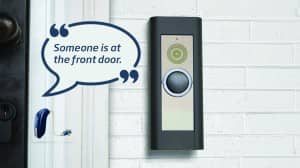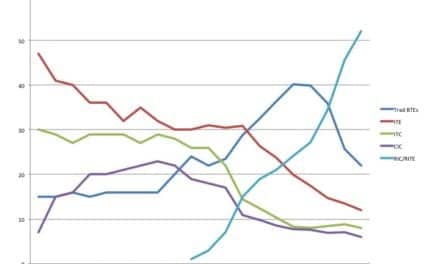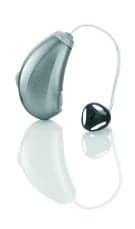TECH TOPIC | February 2017 Hearing Review
Connectivity through the new Oticon Opn hearing aid and “If This Then That” (IFTTT) network allows the user to benefit from online solutions and alternatives previously unavailable, and provides vast opportunities and solutions previously unassociated with hearing aids.
Billions of people across the globe rely on the Internet to supply and connect them with instant information, instant communication, and unrestrained access to that which they seek. When smart technology is used effectively and efficiently, it makes our lives easier and more convenient. According to The Hub,1 roughly one of every 3.5 people on the globe had a smart phone in 2015. Specifically, they estimate more than 2 billion smart phones are in use globally.
Of note, Collins Dictionary2 defines “smart device” as a product which is “connected to other devices or networks via different protocols such as Bluetooth-NFC-WiFi-3G-etc that can operate to some extent interactively and autonomously…” As such, it appears reasonable to conclude the Oticon Opn hearing aid is, indeed, a smart device.
If This, Then That (IFTTT)
Admittedly, hearing aids have not previously met the criteria to be referred to as “smart devices” and, to be fair, traditional hearing aids have not been associated with vast Internet connectivity. However, the introduction of Oticon’s Opn in May 2016, featuring the Velox™ platform’s TwinLink™ technology, represents the first hearing aid technology to offer both Bluetooth and Near Field Magnetic Induction (NFMI) wireless connectivity—and is designed to interact with the innovative and exciting “If This Then That” service (www.IFTTT.com). The IFTTT network connects Internet-connected devices and services (ie, “the Internet of Things”). IFTTT empowers the user to live and experience a more convenient and connected life through their hearing aids by connecting common objects (ie, hearing aids) to online services.
Beck and Fabry3 reported multiple factors impact the acceptance of connectivity by the end-user: cost, portability, performance, ease-of-use, cosmetics, and more. They predicted “The connectivity potential realized by ‘piggy backing’ hearing aid applications onto general consumer electronics is staggering.” In the case of IFTTT, the cost is free, portability is unlimited, performance is typically good (depends generally on wireless access), ease-of-use is a snap, the cosmetic ramifications are zero, and the excitement and benefits are unbridled.
Newman4 reports people using IFTTT have already created more than 40 million IFTTT connections (also known as “Applets” or “Recipes”) through the IFTTT apps and website. Further, he reports the Internet of Things (through IFTTT alone) is already triggered more than a billion times per month. According to Newman, IFTTT Founder and CEO Linden Tibbets stated “We want to become a PayPal for access.”4 That is, IFTTT desires to be “a trusted third party that facilitates an exchange from one service to the next.”
Although Tibbetts and IFTTT strive to make it very simple for the end-user, IFTTT is incredibly powerful. For example, because BMW supports IFTTT, as a BMW owner gets near her home, IFTTT could trigger the garage door to open, and turn up the heat and turn on the lights in the house (Figure 1). Indeed, to date (January 2017) more than 300 products and services are connected to IFTTT, providing a vast array and network of things to connect things (like hearing aids) to.
Hearing Aids and IFTTT
The integration of Oticon’s Opn hearing aids and IFTTT allows the consumer to integrate their Opn hearing aids with Internet-based control of their lights, home alarm, smart thermostat, television recordings, text messages, and more. Spoken alerts, as well as various beeps and tones, can signal you when your hearing aid battery is low, when the laundry is finished, when someone is at the door—and much more. In-home monitoring of dependent children and “connected eldercare” can be initiated and enhanced through multiple IFTTT alerts which signal an event or a need. “Smart Homes” can monitor and control heat, air conditioning, ventilation, carbon monoxide, smoke, and fire presence.
All of these can integrate with Oticon Opn through IFTTT to create a safer and healthier living environment. Wearable health monitoring devices can remind us to take medicines and can monitor vital functions such as temperature, blood pressure and pulse, all of which can be transmitted electronically to a third party to help assure safety and well-being. Smoking cessation, insulin levels, exercise regimens, and more are already being monitored via electronic sensors.
Conclusion
The Internet of Things is already here and has been facilitated and enhanced through the integration of Opn and IFTTT. Oticon’s Opn hearing aids take connectivity to a higher level. Sophisticated and easy to use functionality—designed to allow people to seamlessly connect online with a vast array of essentially unlimited products and services through the Internet of Things—allows people with hearing loss to live the life they choose, with the hearing they have. Connectivity through Opn and IFTTT allows the hearing aid user to benefit from online solutions and alternatives previously unavailable through even wireless hearing aids, and provides vast opportunities and solutions previously unassociated with hearing aids.
References
-
Kissonergis P. Smartphone ownership, usage and penetration by country. October 13, 2015. Available at: http://thehub.smsglobal.com/smartphone-ownership-usage-and-penetration
-
Collins Dictionary. “Smart device.” March 8, 2013. Available at: https://www.collinsdictionary.com/submission/11527/Smart+Device
-
Beck DL, Fabry D. Access America–It’s about connectivity. Audiology Today. 2011;Jan/Feb:24-28. Available at: http://www.audiology.org/sites/default/files/audiologytoday/AT%2023.1%20-%20LOW.pdf
-
Newman J. Inside IFTTT’s plan for a more harmonious internet. December 2, 2016. Available at: https://www.fastcompany.com/3065864/tech-forecast/inside-ifttts-plan-for-a-more-harmonious-internet?utm_source=mailchimp&utm_medium=email&utm_campaign=fast-company-daily-newsletter&position=1&partner=newsletter&campaign_date=12032016
CORRESPONDENCE can be addressed to Hearing Review or Dr Beck at: [email protected]
Reference for this article: Beck DL, Nelson T, Porsbo M. Connecting smart hearing aids to the internet via IFTTT. Hearing Review. 2017;24(2):36-37.







